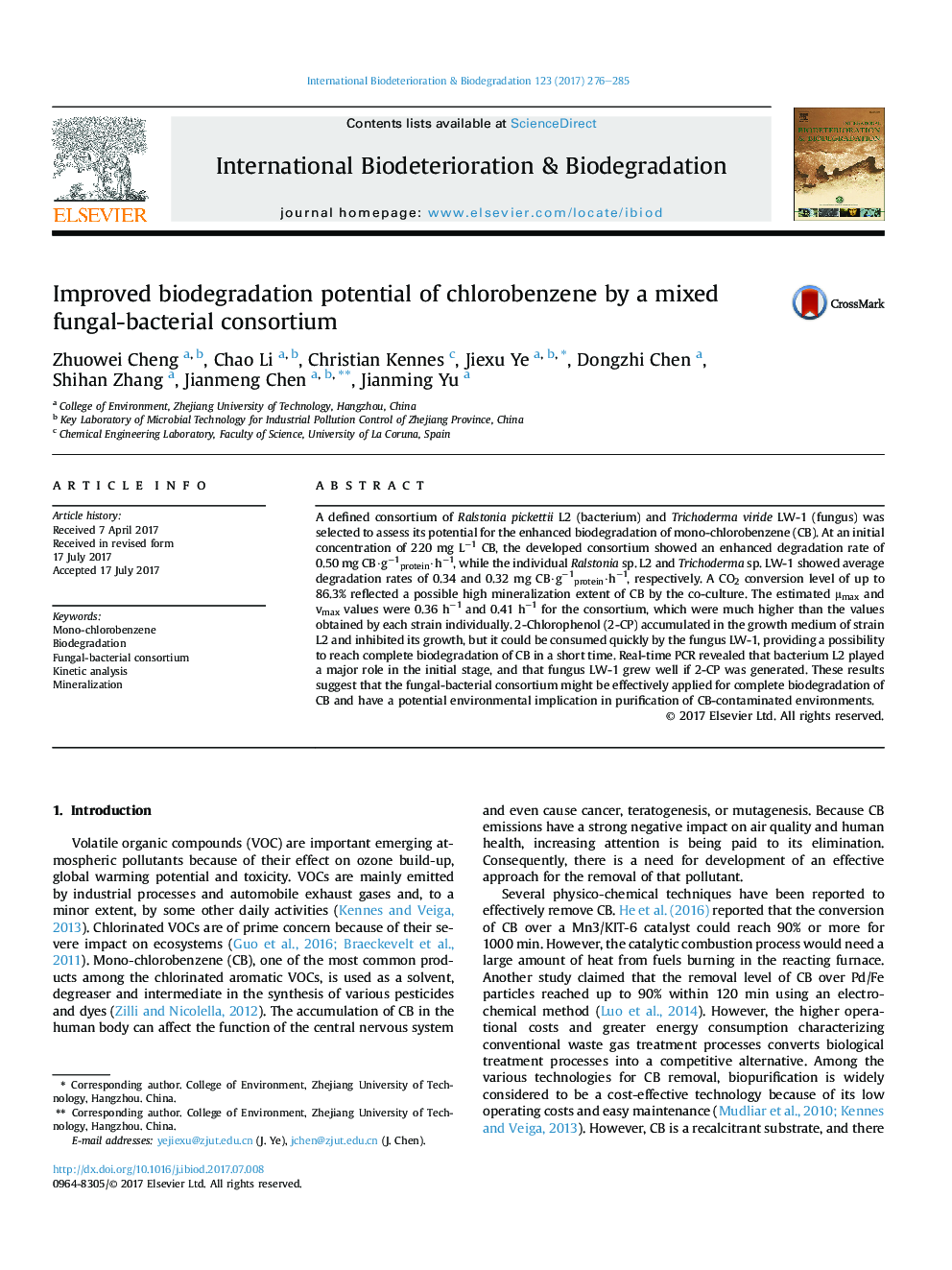| Article ID | Journal | Published Year | Pages | File Type |
|---|---|---|---|---|
| 5740277 | International Biodeterioration & Biodegradation | 2017 | 10 Pages |
â¢First report on the use of a fungal-bacterial consortium for the biodegradation of CB.â¢The biodegradation rate of consortium was 1.5 times more than that of single one.â¢The addition of fungus LW-1 could relieve the inhibition of 2-CP to bacterium L2.â¢RT-PCR analysis confirmed the strains growing with different rates at various times.â¢The interactions within the different microorganisms led to the enhanced biodegradation.
A defined consortium of Ralstonia pickettii L2 (bacterium) and Trichoderma viride LW-1 (fungus) was selected to assess its potential for the enhanced biodegradation of mono-chlorobenzene (CB). At an initial concentration of 220 mg Lâ1 CB, the developed consortium showed an enhanced degradation rate of 0.50 mg CB·gâ1protein·hâ1, while the individual Ralstonia sp. L2 and Trichoderma sp. LW-1 showed average degradation rates of 0.34 and 0.32 mg CB·gâ1protein·hâ1, respectively. A CO2 conversion level of up to 86.3% reflected a possible high mineralization extent of CB by the co-culture. The estimated μmax and vmax values were 0.36 hâ1 and 0.41 hâ1 for the consortium, which were much higher than the values obtained by each strain individually. 2-Chlorophenol (2-CP) accumulated in the growth medium of strain L2 and inhibited its growth, but it could be consumed quickly by the fungus LW-1, providing a possibility to reach complete biodegradation of CB in a short time. Real-time PCR revealed that bacterium L2 played a major role in the initial stage, and that fungus LW-1 grew well if 2-CP was generated. These results suggest that the fungal-bacterial consortium might be effectively applied for complete biodegradation of CB and have a potential environmental implication in purification of CB-contaminated environments.
Graphical abstractDownload high-res image (271KB)Download full-size image
